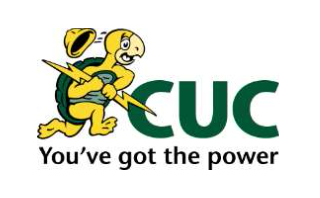Cayman: CUC provides update on CORE DER programmes- December 1st 2021 (002)
CUC provides an update to the CORE and DER programmes

Caribbean Utilities Company, Ltd. (“CUC”) is pleased to advise customers that the Utility Regulation and Competition Office (“OfReg”) has approved the allocation of an additional 3 megawatts (“MW”) capacity to the Consumer Owned Renewable Energy (“CORE”) and Distributed Energy Resource (“DER”) programmes.
This means that CUC will make an additional 3 MW of Distributed Generation (“DG”) capacity available to the CORE and DER programmes and customers will be able to apply for allocation of the available capacity to interconnect, subject to the terms and conditions, to either programme. The application forms, to be completed digitally by the prospective customer, will be available from noon on December 6, 2021, until such time as the capacity has been fully reserved. The application form will be located on the CUC website via the Renewable Energy page.
OfReg has determined that adding 3MW of capacity to the grid prior to CUC’s Battery Energy Storage Project (“BESS”) coming online is essential to the continued promotion of both the CORE and DER programmes and the promotion of stability to both consumers and the industry.
The recently established CORE Feed in Tariff (“FIT”) rates which were published in the 2020-21 capacity reallocation determination of KYD $0.175/kWh for solar PV systems 5kW and below, and a FIT rate of KYD $0.15/kWh for systems between 5kW and 10kW, will apply to the released capacity in relation to the CORE programme.
The rate mechanisms for the DER programme will remain unchanged. The Excess Energy Sale credit is described in the Demand Rates Terms of Service and is available on CUC’s website.
Customers who want to participate in the new 3 MW quota and who will be allowed to interconnect to the Transmission and Distribution (“T&D”) system can expect that CUC may only be required to allow systems to connect to the T&D system where the customer’s installer has a record of proper workmanship and has facilitated for their earlier customers the contracted inverter settings and ride-through criteria agreed to in either their CORE or DER Agreements.
Vice President Customer Services and Technology, Mr. Sacha Tibbetts says, “We are very supportive of the decision taken by the regulator. This additional capacity will give more customers access to the CORE and DER programmes and we anticipate that we will see an increase in the number of customers who will sign up. Our Company anticipates that the extension to the programme will be rapidly taken up by our customers and will assist in our goal of reducing Grand Cayman’s dependence on fossil fuels. Our Company remains committed to promoting and developing renewable energy as a source of electricity generation and we believe that programmes such as CORE and DER play an important role along with utility scale projects.”
The CORE programme which was revised and approved by the regulator in 2012 has been very popular with both residential and commercial customers. The programme has allowed customers to connect small scale solar systems or wind turbines to CUC’S distribution system and to reduce their monthly energy bills by generating their own electricity while remaining connected to the CUC grid. However, the CORE programme is subsidised by non-CORE customers as the rate paid to CORE customers for their electricity production is higher than the cost CUC would normally incur and charge to customers for the same energy from other sources.
To date the total number of connected customers under the CORE programme is 674 customers with a total of 7,667.31 kilowatts providing a total CO2 reduction of approximately 6,958 tonnes per year.
The DER programme was introduced in January 2018 and allows customers to consume electricity generated by their own renewable energy system. Under the DER programme customers are also able to sell to CUC any excess electricity produced and exported to the grid at an avoided cost-of- generation credit rate. Incorporating the lessons learned by other jurisdictions from early net metering programmes, DER customers are billed with a demand rate structure. The use of demand rates aligns the fixed costs of providing a grid interconnection and standby provision to the customer with demand charges, avoiding any potential cross-subsidization between DER and non- producing customers.
CUC continues to work through the implementation phase of the Integrated Resource Plan, which gives shape to Grand Cayman’s energy generation plans for the next 30 years. The implementation phase of the plan will be an exciting period for Grand Cayman, with a rapid increase in renewables connected to the grid which will provide cleaner energy at competitive and more stable costs.
Customers can visit the CUC’s website www.cuc-cayman.com for further details.





